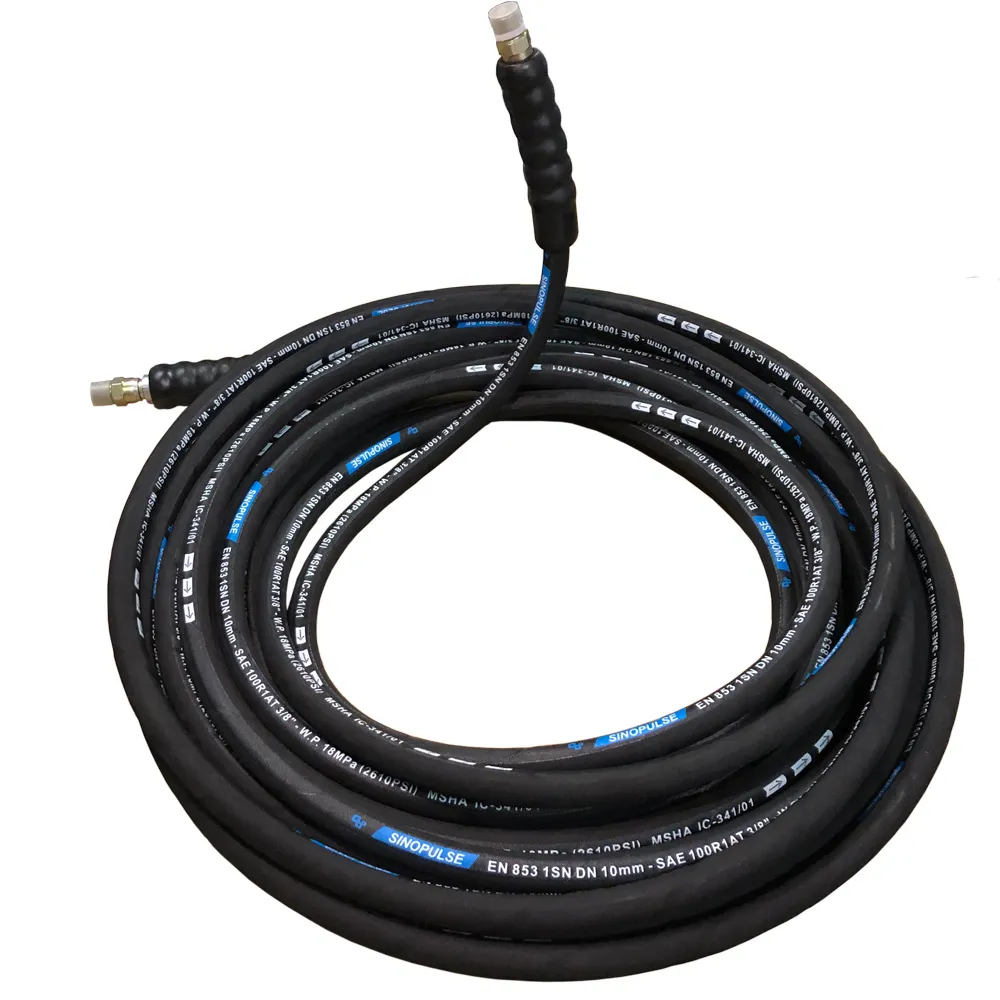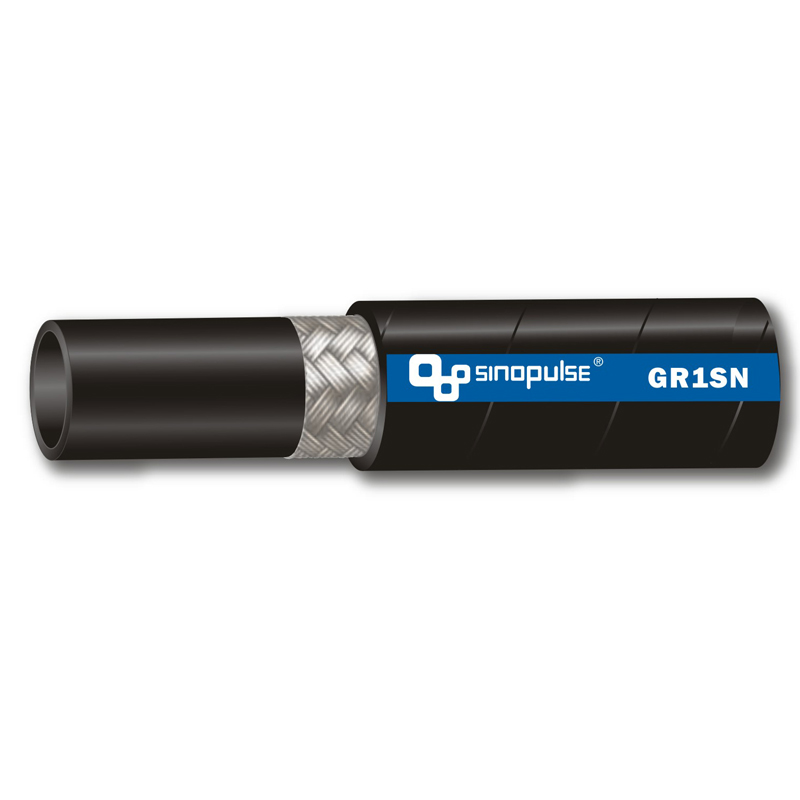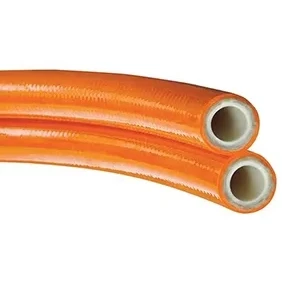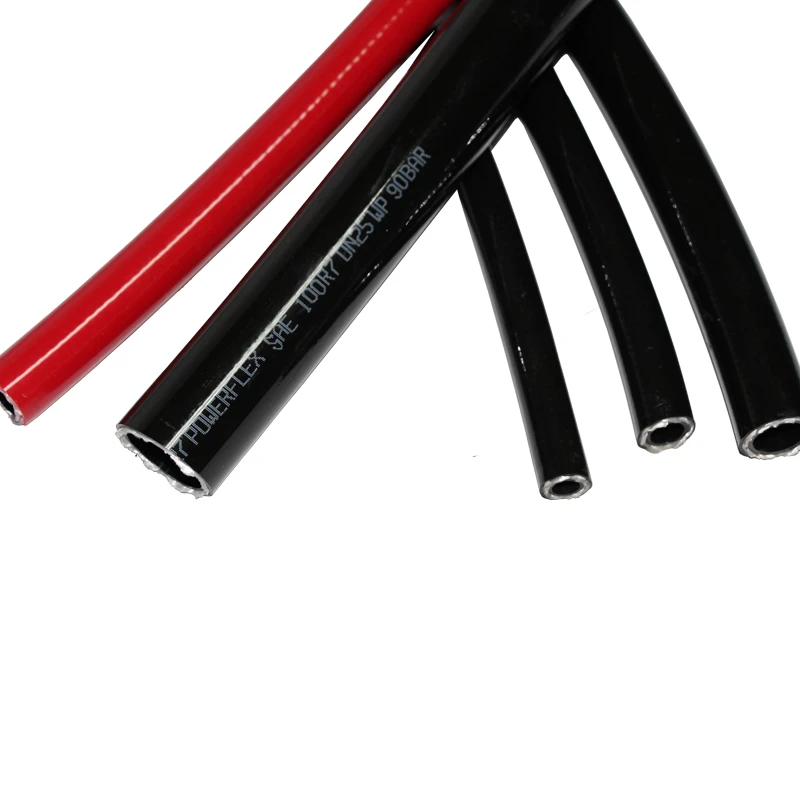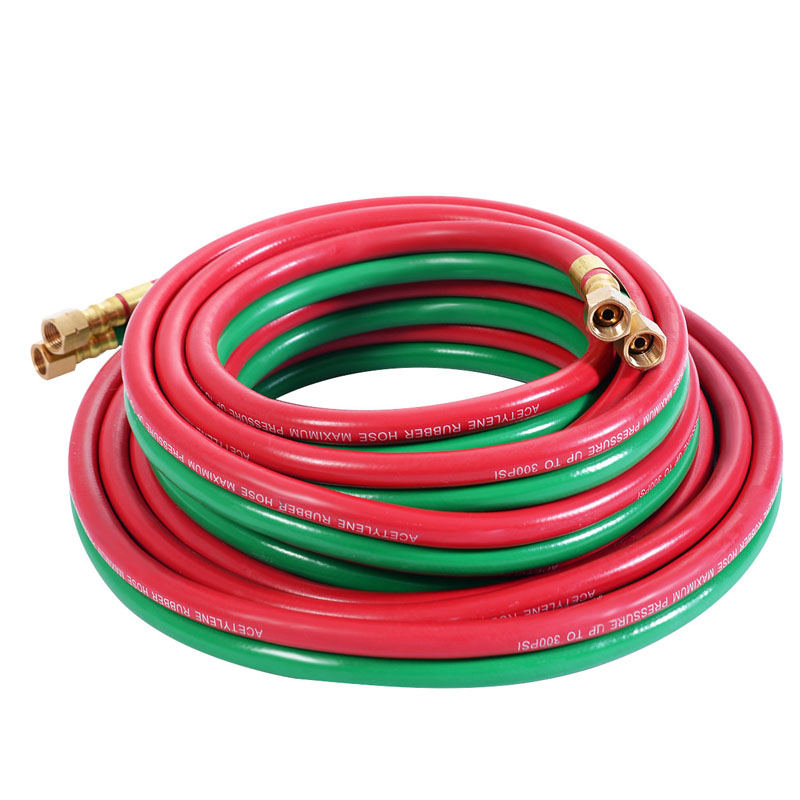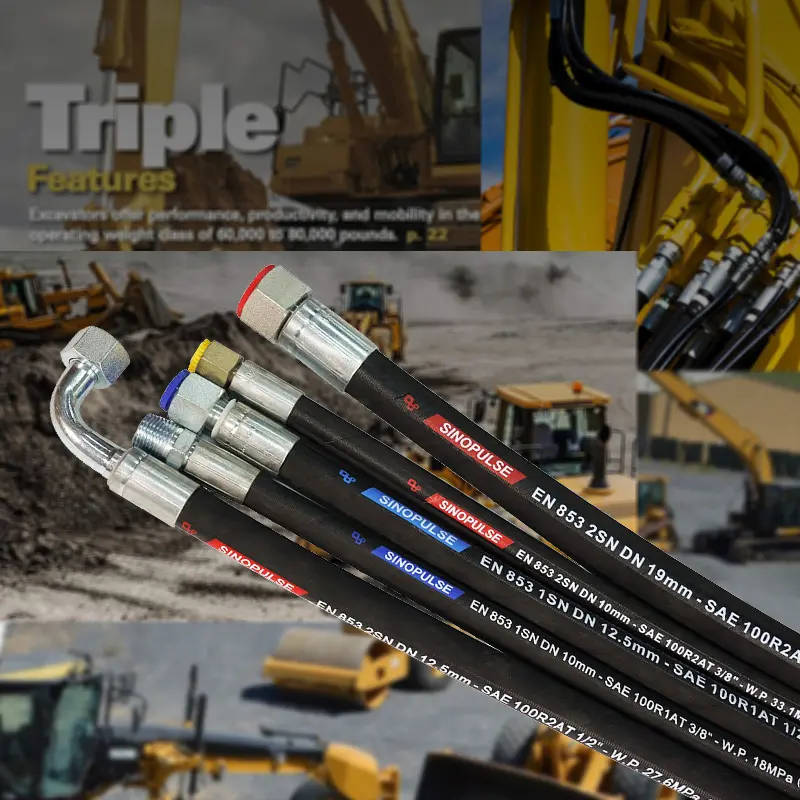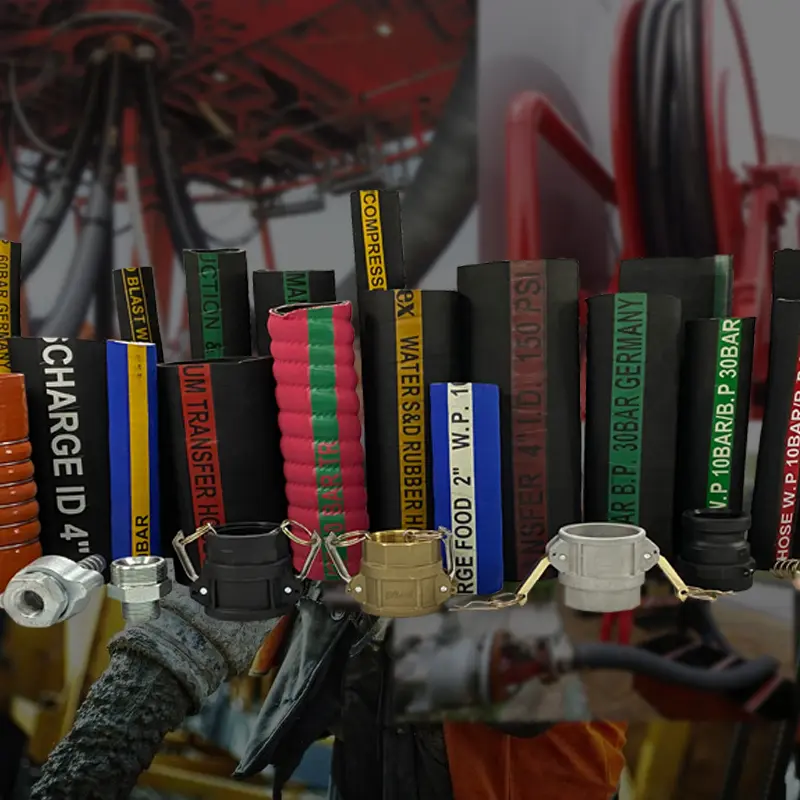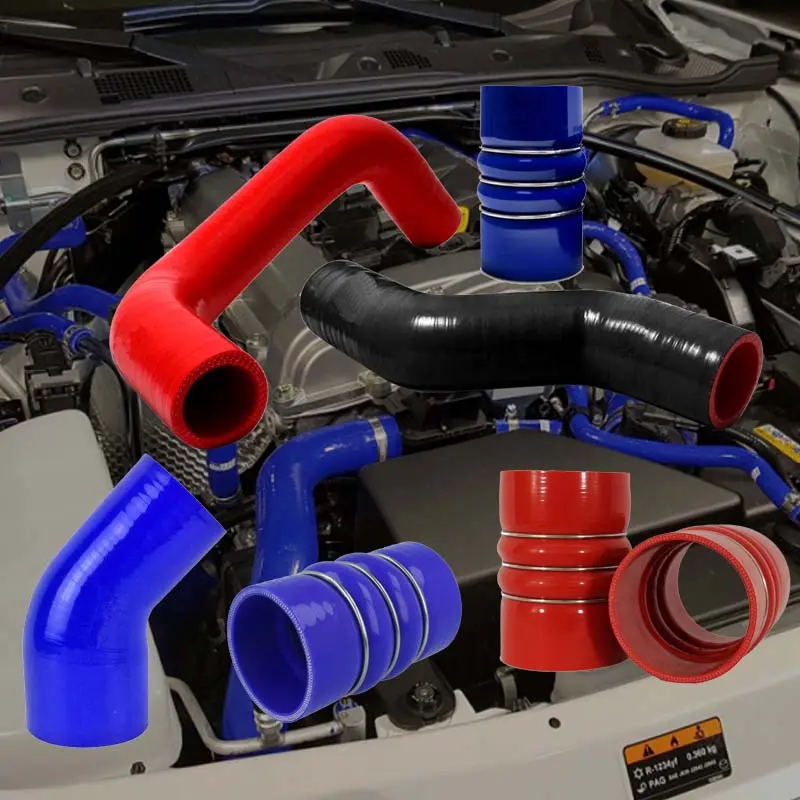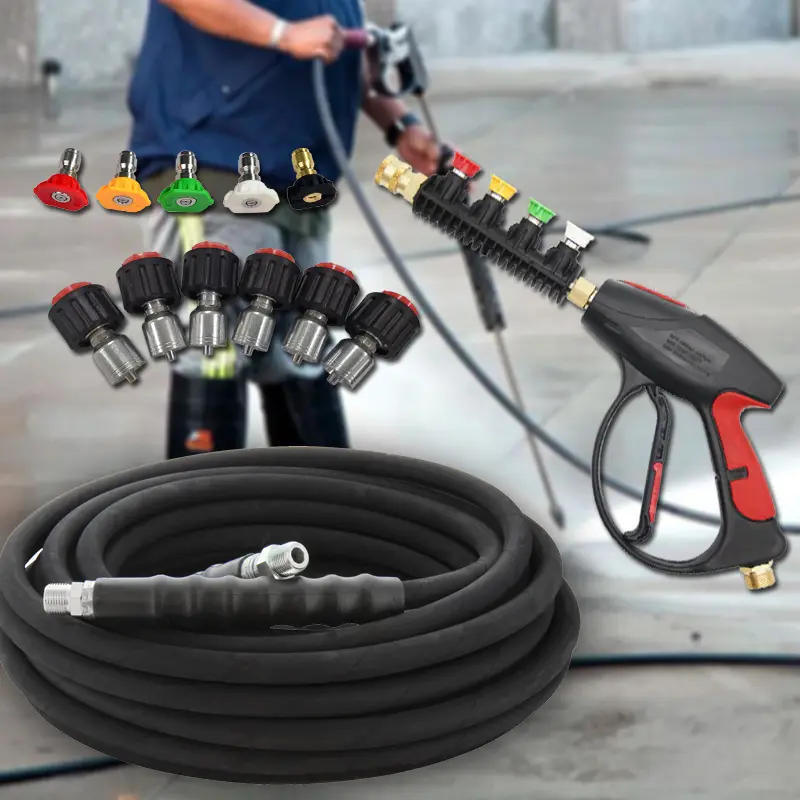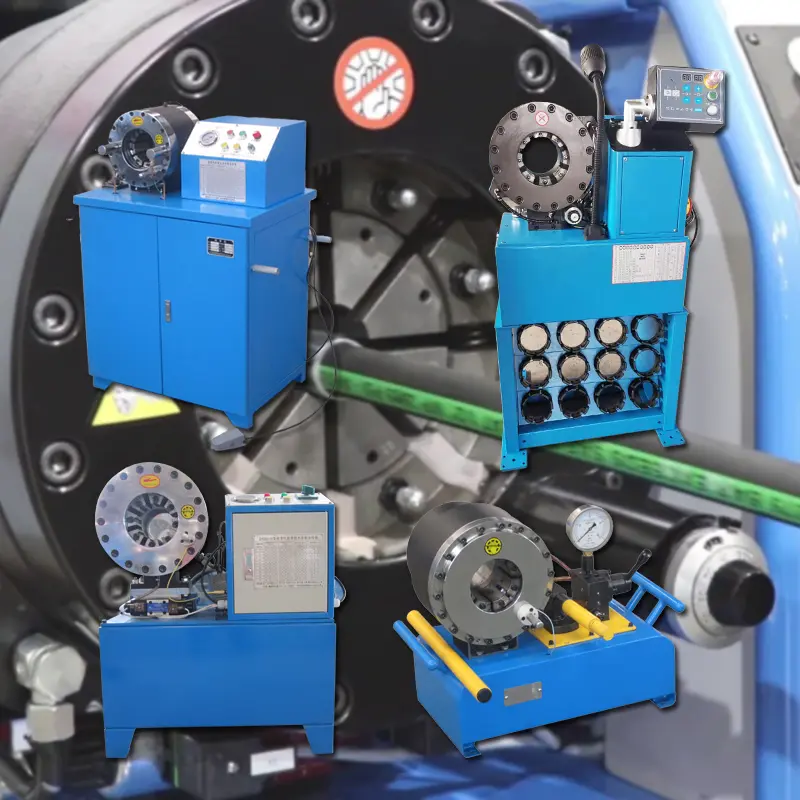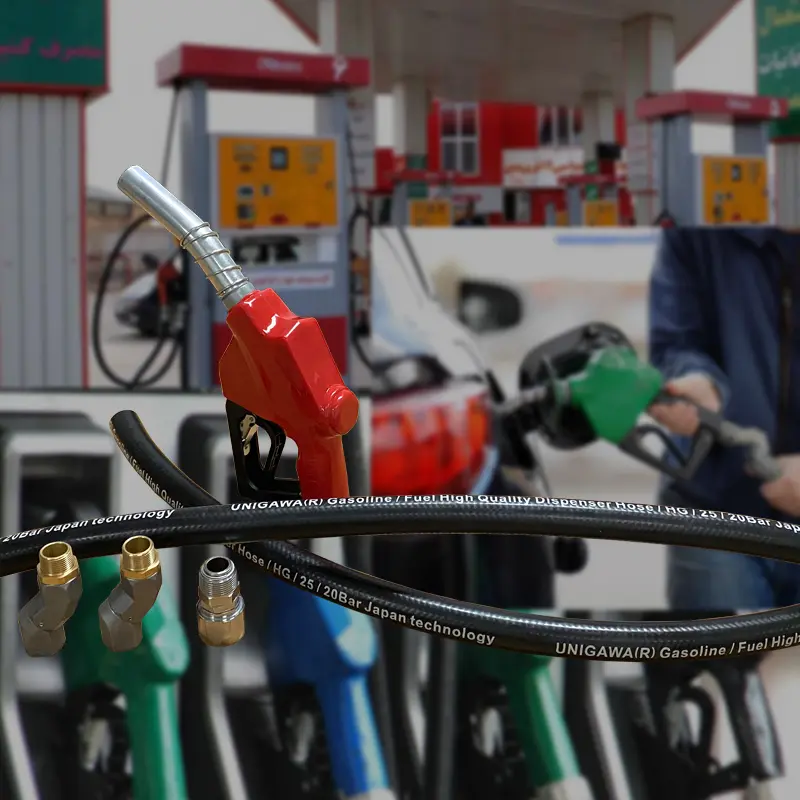Understanding DIN EN854 2TE: A Core Component in Modern Hydraulic Systems
In the dynamic world of industrial hydraulics, the choice of components directly impacts system efficiency, longevity, and safety. Among the array of flexible conduits available, the DIN EN854 2TE textile reinforced hydraulic hose stands out as a critical element. This specific hose type, compliant with international DIN EN854 standards, is engineered for medium-pressure hydraulic applications where a balance of flexibility, durability, and cost-effectiveness is paramount. Modern industry trends increasingly demand components that offer not only robust performance but also contribute to overall system optimization, including energy efficiency and reduced maintenance downtime. The design of en854 2te addresses these requirements by featuring a high-quality synthetic rubber inner tube, two braids of textile reinforcement, and a weather-resistant outer cover. This construction makes it an ideal choice for a wide spectrum of machinery, ranging from agricultural equipment and construction vehicles to various industrial presses and material handling systems. Its widespread adoption underscores its reliability and suitability for scenarios where consistent hydraulic fluid transfer under specific pressure and temperature conditions is essential. The demand for such meticulously engineered hydraulic hose solutions continues to grow, driven by advancements in automation and the increasing complexity of hydraulic circuits across diverse sectors.
The significance of selecting the correct hydraulic hose cannot be overstated, as it directly influences operational integrity and minimizes potential system failures. The en854 2te specification ensures that the hose meets stringent performance criteria for working pressure, burst pressure, and temperature range, making it a reliable choice for critical applications. Industries are moving towards more sustainable and efficient solutions, and components like this hose play a vital role by offering dependable service life and reducing the frequency of replacements. Its textile reinforcement provides excellent flexibility, which simplifies installation in confined spaces and reduces stress on connections, thereby prolonging the life of the entire hydraulic assembly. Moreover, its relatively lighter weight compared to steel wire braided hoses can contribute to reduced overall machine weight, which is particularly beneficial in mobile applications. As global industrial landscapes evolve, the focus remains on enhancing operational efficiency, minimizing environmental impact, and ensuring worker safety. The DIN EN854 2TE hydraulic hose contributes significantly to these objectives by providing a proven, high-performance solution for hydraulic power transmission.
The Meticulous Manufacturing Process of DIN EN854 2TE Hydraulic Hose
The production of a high-quality DIN EN854 2TE hydraulic hose is a sophisticated process, involving precision engineering and stringent quality control at every stage. It begins with the extrusion of the inner tube, typically made from a durable synthetic rubber compound, specifically formulated to be compatible with various hydraulic fluids such as petroleum-based oils, water-glycol, and water-oil emulsions. This inner layer is critical for fluid conveyance and must exhibit excellent chemical resistance and a smooth bore to minimize pressure drops. Following this, the core distinction of the en854 2te hose comes into play: the textile reinforcement. Two layers of high-tensile synthetic textile yarn are precisely braided over the inner tube. This braiding process, often performed on advanced braiding machines, ensures uniform tension and coverage, which are vital for the hose's pressure containment capabilities. Unlike steel wire reinforcement, textile braiding imparts superior flexibility and lighter weight, making installation easier in complex routing scenarios.
After the reinforcement layers are applied, the outer cover is extruded over the textile braids. This cover is usually made from an abrasion-resistant, weather-resistant synthetic rubber compound, often designed to resist ozone, UV radiation, and general environmental degradation. This external layer protects the underlying reinforcement from physical damage and environmental factors, significantly extending the hose's service life, which can range from 5 to 10 years or more depending on application severity and maintenance. The final critical step is vulcanization, a curing process where the hose is subjected to heat and pressure, transforming the rubber compounds into a highly elastic and durable material. Throughout this manufacturing flow, adherence to international standards such as ISO 1436 and the specific DIN EN854 guidelines is rigorously maintained. This includes detailed inspection processes like dimensional checks (inner and outer diameter tolerances), burst pressure testing, impulse testing, and flexibility assessments. For instance, testing for compliance with ISO standards ensures that the hose can withstand millions of impulse cycles at specified pressures and temperatures, far exceeding typical operational demands. This comprehensive manufacturing and testing protocol ensures that each en854 2te hose delivers consistent, reliable performance in demanding industrial environments, providing exceptional resistance to corrosion from external elements and contributing to energy efficiency through optimized flow.
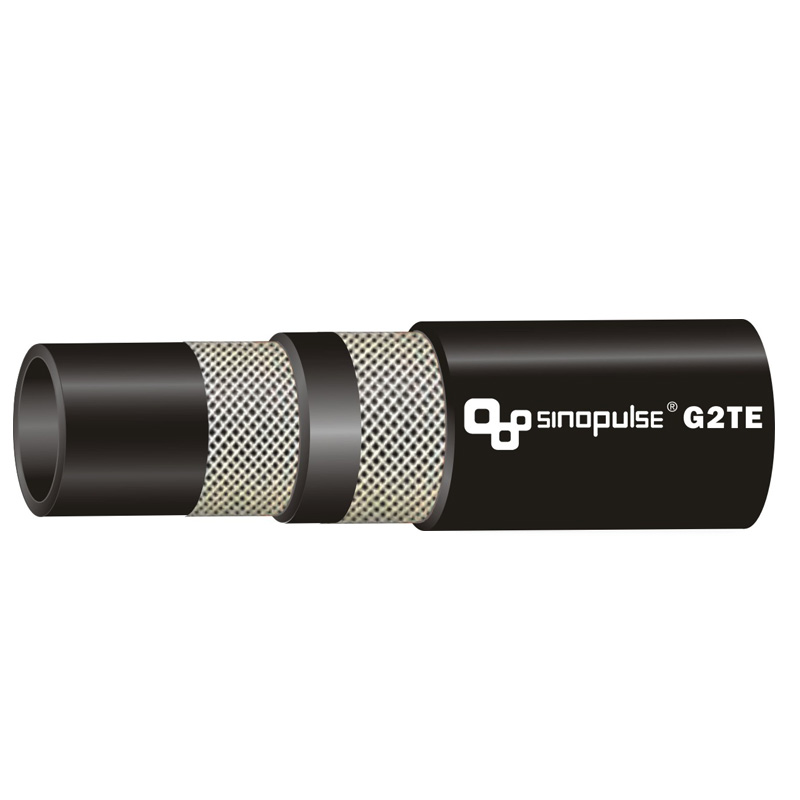
Technical Specifications and Performance Parameters of DIN EN854 2TE
Understanding the precise technical specifications of DIN EN854 2TE hydraulic hoses is crucial for engineers and procurement specialists to ensure optimal system design and operational safety. These parameters define the hose's capabilities and limitations, dictating its suitability for various applications. Key specifications include the nominal diameter (DN), which denotes the approximate internal diameter and determines flow rate; the actual inner (ID) and outer (OD) diameters, critical for fitting compatibility and routing; and perhaps most importantly, the maximum working pressure (WP) and minimum burst pressure (BP). The WP is the maximum continuous pressure the hose is designed to withstand safely, while the BP represents the pressure at which the hose is expected to fail, providing a significant safety factor, typically 4:1 for hydraulic hoses. The operating temperature range specifies the ambient and fluid temperatures the hose can endure without material degradation, ensuring its integrity under thermal stress.
Another vital parameter is the minimum bend radius (MBR), which dictates the tightest curve the hose can form without kinking or sustaining internal damage, impacting flow efficiency and hose longevity. Adhering to the MBR is paramount during installation to prevent premature failure. The hose's weight per meter is also a practical consideration, particularly in mobile applications or when calculating total system weight. The construction of the en854 2te hose with its textile reinforcement makes it particularly suitable for medium-pressure lines requiring flexibility. Below is a comprehensive table detailing typical specifications for various sizes of DIN EN854 2TE hydraulic hoses, providing the essential data points required for informed selection and precise application engineering. These figures are derived from rigorous testing procedures mandated by international standards, ensuring reliability and performance consistency across all manufactured batches of hydraulic hose, enabling users to confidently integrate them into critical systems while maintaining high standards of safety and efficiency.
| Nominal Diameter (DN) / Dash Size | Inner Diameter (ID) [mm / inch] | Outer Diameter (OD) [mm] | Max. Working Pressure (WP) [MPa / PSI] | Min. Burst Pressure (BP) [MPa / PSI] | Min. Bend Radius (MBR) [mm] | Operating Temperature Range [°C] |
|---|---|---|---|---|---|---|
| DN6 / -4 | 6.4 / 0.25 | 13.8 | 20.0 / 2900 | 80.0 / 11600 | 100 | -40 to +100 |
| DN10 / -6 | 10.0 / 0.39 | 17.2 | 16.0 / 2320 | 64.0 / 9280 | 125 | -40 to +100 |
| DN12 / -8 | 12.5 / 0.49 | 20.1 | 12.5 / 1810 | 50.0 / 7250 | 150 | -40 to +100 |
| DN16 / -10 | 16.0 / 0.63 | 23.0 | 10.0 / 1450 | 40.0 / 5800 | 200 | -40 to +100 |
| DN19 / -12 | 19.0 / 0.75 | 26.0 | 9.0 / 1305 | 36.0 / 5220 | 240 | -40 to +100 |
| DN25 / -16 | 25.0 / 0.98 | 33.5 | 6.3 / 915 | 25.2 / 3655 | 300 | -40 to +100 |
Versatile Applications and Unmatched Advantages of DIN EN854 2TE
The robust design and compliant manufacturing of DIN EN854 2TE hydraulic hose make it exceptionally versatile across a multitude of industrial sectors. Its core utility lies in conveying petroleum or water-based hydraulic fluids within medium-pressure systems. Common application scenarios include the power steering lines in heavy-duty trucks and buses, ensuring responsive and reliable control. In the agricultural sector, these hoses are integral to tractors and farming implements, facilitating the operation of loaders, plows, and harvesting equipment. Construction machinery, such as excavators, bulldozers, and loaders, heavily relies on en854 2te for various auxiliary hydraulic circuits, benefiting from its flexibility in tight routing and resistance to common construction site hazards like abrasion. Furthermore, it finds widespread use in general industrial machinery, including presses, forklifts, and automated assembly lines, where efficient power transmission is critical for continuous operation. Its balanced performance characteristics also render it suitable for lubrication lines and general industrial fluid power applications that do not demand the extreme pressures handled by multi-spiral wire hoses.
The technical advantages offered by the en854 2te hose are significant for B2B decision-makers. Firstly, its superior flexibility, attributed to the textile reinforcement, simplifies installation and maintenance, especially in compact machinery or where complex routings are necessary, reducing labor costs and potential for kinking. Secondly, it provides an excellent cost-performance ratio. While not designed for ultra-high pressures, it offers reliable performance for a vast range of medium-pressure applications at a more economical price point compared to its wire-braided counterparts. This makes it a strategic choice for optimizing budgets without compromising safety or efficiency. The hose exhibits good impulse resistance for its class, ensuring durability under fluctuating pressure conditions. Its synthetic rubber construction ensures a broad operating temperature range, accommodating diverse climatic conditions and operational demands. The outer cover is engineered for high abrasion and weather resistance, protecting the hose from environmental degradation and physical wear, thus extending its service life and minimizing the risk of premature failure. Moreover, its relatively smooth inner bore minimizes friction and pressure drop, contributing to overall energy efficiency within the hydraulic system. This combination of robust performance, ease of use, and cost-effectiveness positions the hydraulic hose as a preferred component for a wide array of industrial and mobile hydraulic systems requiring a dependable, flexible, and durable solution.
Ensuring Quality: Certifications, Testing, and Manufacturer Trust in DIN EN854 2TE
For B2B customers, trust and authoritativeness are paramount when selecting hydraulic components. This is why adherence to stringent quality assurance protocols and international certifications is non-negotiable for DIN EN854 2TE hydraulic hoses. Reputable manufacturers ensure their products meet or exceed the rigorous requirements of DIN EN 854, ISO 1436, and often SAE J517 (Type 100R3), which are globally recognized standards for hydraulic hose performance. Compliance with these standards guarantees that the hose has undergone extensive testing for burst pressure, impulse cycles, ozone resistance, and material compatibility. For example, impulse testing involves subjecting the hose to millions of rapid pressure cycles at elevated temperatures, simulating real-world operating conditions to confirm its fatigue resistance and expected service life. Burst pressure tests determine the maximum static pressure the hose can withstand before failure, ensuring a crucial safety margin in operational systems.
Beyond standardized testing, a commitment to continuous quality improvement distinguishes leading manufacturers. This includes using advanced material formulations for the inner tube and outer cover to enhance chemical resistance and abrasion durability, respectively. Our manufacturing processes are ISO 9001 certified, demonstrating a comprehensive quality management system that spans from raw material sourcing to final product inspection. We regularly conduct internal audits and participate in third-party certifications to validate our production integrity. In terms of manufacturer comparison, key differentiators include not just compliance with minimum standards but also exceeding them, offering extended warranties, and providing comprehensive technical support. For instance, some manufacturers might offer improved bend radius characteristics or enhanced temperature resistance for their en854 2te hoses, catering to niche applications. Furthermore, the ability to offer customized solutions—such as specific hose lengths, pre-assembled hose lines with unique fittings, or specialized outer covers for extreme environments (e.g., flame-retardant or highly abrasive-resistant coatings)—is a significant value proposition. Our extensive service history and established partnerships with major industrial clients globally underscore our proven track record and reliability in delivering high-performance hydraulic hose solutions. This dedication to quality and customer-centric solutions builds immense trustworthiness and solidifies our position as a leading supplier in the hydraulic hose market.
FAQs, Delivery, and Customer Support for DIN EN854 2TE Hydraulic Hoses
To further enhance trustworthiness and provide comprehensive support to our B2B clientele, we offer detailed answers to frequently asked questions regarding the DIN EN854 2TE hydraulic hose, coupled with transparent policies on delivery and dedicated customer support. This approach ensures that our clients are fully informed and confident in their purchasing decisions and subsequent operations.
Frequently Asked Questions (FAQs):
-
Q1: What is the primary difference between en854 2te and other hydraulic hoses, such as wire braided hoses?
A1: The primary difference lies in the reinforcement material. en854 2te uses two braids of high-tensile textile yarn, offering superior flexibility and lighter weight compared to steel wire braided hoses (like EN 853 1SN/2SN). While wire braided hoses typically handle higher pressures, textile hoses are ideal for medium-pressure applications where flexibility, reduced weight, and cost-effectiveness are priorities. -
Q2: What maintenance is required for en854 2te hoses to ensure optimal service life?
A2: Regular visual inspections are crucial. Check for signs of abrasion, cracks, bulges, leaks, or kinking. Ensure proper routing to avoid sharp bends or rubbing against other components. Replace the hose immediately if any damage is observed. Adhering to manufacturer's recommended service intervals and proper storage conditions also significantly extends hose life. -
Q3: Can en854 2te hoses be used with all types of hydraulic fluids?
A3: DIN EN854 2TE hoses are typically designed for use with petroleum-based hydraulic fluids, water-glycol, and water-oil emulsions. However, it's critical to consult the specific manufacturer's material compatibility chart for the exact hose type and fluid being used, especially for synthetic fluids or specific chemical applications, to prevent material degradation. -
Q4: What is the expected service life of a DIN EN854 2TE hydraulic hose?
A4: The service life varies significantly based on application severity, operating conditions (pressure, temperature, impulse cycles), fluid type, and maintenance practices. Generally, under typical operating conditions and proper maintenance, an en854 2te hose can offer a service life ranging from 5 to 10 years or more. However, specific applications with extreme conditions may necessitate more frequent inspection and replacement.
Delivery Cycle and Warranty Commitment:
We understand the critical nature of timely delivery in industrial operations. Our standard delivery cycle for bulk orders of hydraulic hose typically ranges from 7-14 business days, depending on order volume and customization requirements. For urgent requirements, expedited shipping options are available upon request, with lead times as short as 3-5 business days for in-stock items. We provide precise lead time estimates at the time of quotation to facilitate effective project planning.
Our commitment to quality extends to a robust warranty policy. All our DIN EN854 2TE hoses are backed by a comprehensive warranty against manufacturing defects for a period of 12 months from the date of purchase. This warranty covers material and workmanship flaws, ensuring peace of mind for our clients. In the unlikely event of a product issue, our dedicated customer support team is ready to assist with rapid resolution, including product analysis and replacement as per our warranty terms.
Dedicated Customer Support:
Our highly experienced technical support team is available to provide expert guidance on product selection, application engineering, installation best practices, and troubleshooting. We offer personalized support to help you maximize the performance and lifespan of your hydraulic hose systems. Whether you require assistance with complex system designs, fluid compatibility queries, or post-purchase support, our specialists are just a call or email away, ensuring that your operations run smoothly and efficiently with reliable en854 2te components.
References
- ISO 1436:2015 Rubber hoses and hose assemblies — Hydraulic applications — Textile-reinforced types — Specification.
- DIN EN 854:2012 Hydraulic hose assemblies with textile reinforcement for general purpose use — Specifications.
- SAE J517:2020 Hydraulic Hose.
- Technical Handbook for Fluid Power Systems, National Fluid Power Association.
- Rubber Chemistry and Technology, American Chemical Society.
Product Application









